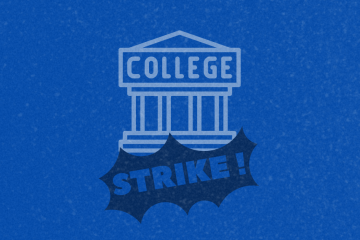The privatization of Hydro One has begun. In the first week of November, the first public offering of Hydro stocks resulted in the sale of about 10% of the public utility, generating great excitement on the TSX where the RBC Capital Markets and ScotiaBank led the pack in scooping up the largest parts of this and future offerings.
The Hydro One firesale is an out and out gift to the banks and corporations, in exchange for some quick money to fund the government’s unfunded $30 billion infrastructure program – one of two key promises that won them the June 2014 Ontario election.
The government says the main objective of the sale is funding for the infrastructure program. But only $4.6 billion will be realized by the sale – less than one-sixth of what’s needed – and at a huge cost to the public.
Instead, this $30 billion could be generated by reversing an estimated $15 billion in corporate tax cuts and by increasing the corporate tax rate to 22% for an additional $10.5 billion annually. That would raise the funds for the infrastructure program, and maintain Hydro One as a public utility. It would also generate a much larger, and stable revenue stream for other public projects, like public hospitals, the long promised (but never delivered) needs-based funding formula for education, or a provincial system of affordable public childcare, urban and inter-urban public transit.
But if the objective is privatization (or ‘unlocking’ equity in existing assets, as the Liberals so fetchingly describe it) then the government’s actions are much clearer. Privatization is a goal all by itself, and more will follow if the sale of Hydro One is successful.
The Liberals, and the corporations they evidently govern for, may think this is reasonable, but the public certainly doesn’t. What’s needed are more and better services; not less.
In all, the government plans to sell off 60% of Hydro One, claiming it can retain control over electricity in the province with 40% of the shares. That’s a story for the gullible and the uninformed, who don’t know how banks and corporations work together to secure control with very little equity. Even the Board will be filled with bank and corporate representatives, including those ‘representing’ the government and the public.
In fact, this sell-off is the realization of former Tory Premier Mike Harris’ effort to privatize Ontario Hydro – a deal that was stopped by an angry and organized public in 2002. Privatization, deregulation and trade deals were part of the austerity agenda then, and they’re part of it now too.
Former TD Chief Economist Douglas Peters says it like it is: corporations will demand at least an 8% return on their investment – fat profits in other words. This will send electricity rates through the roof for ratepayers, including industrial users, homeowners and tenants.
Furthermore, the 2004 province-wide electricity blackout was caused by a private electricity company in Ohio, which produced a power surge because it feared not getting approval of its bid for higher rates. Suffice it to say, corporate greed knows no borders.
Hydro One generates $1 billion annually for the public treasury, funds that are spent on health, education, public services, cities, and more. These cuts will be deep, and they will be permanent. Jobs and services will be lost across the province.
For more than 100 years, Ontario Hydro has maintained a reliable supply of cheap electricity to industry and ratepayers, becoming the province’s most valuable and productive public asset. Created by a Conservative government to develop industry and create jobs, that mandate is just as vital today.
Public opposition stopped Tory privatization plans 15 years ago. Widespread opposition this time includes the public, the NDP and Conservatives in Queen’s Park, the Communist Party, and organized labour. Ontario’s Financial Accountability Office states that privatization will raise electricity rates and government debt.
But the Liberals are plowing ahead anyway. Under cover of the federal election, they have set the privatization wheels in motion, trying to beat the clock figuratively and literally. If they can privatize more of the Hydro One stock before opposition crystallizes into public action, the government wins. By doing it early in their mandate, Liberal spin doctors hope the public will forget about it by the next election.
Fortunately for supporters of publicly owned and affordable electricity transmission, Ontario’s labour parliament meets in convention this month in Toronto. Decisive action by OFL delegates and leadership to take this fight to the streets, and to demand public hearings and a stop to the firesale of Ontario’s most important public asset, can put this on the front burner at Queen’s Park.
Working with labour’s allies in the Common Front, public opposition can be moved out of the kitchens and onto the lawns of Queen’s Park. Mass protests and independent political action by labour and its allies are the only thing that can stop the privatization train now.
(This article was prepared by Liz Rowley for People’s Voice newspaper)



